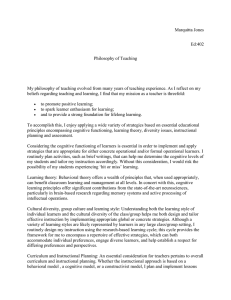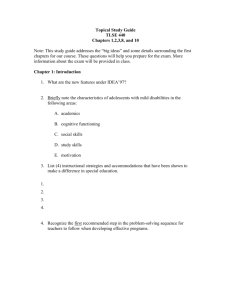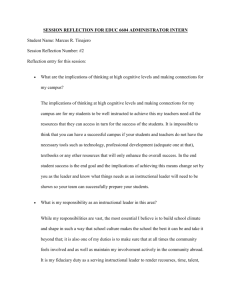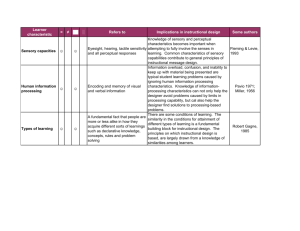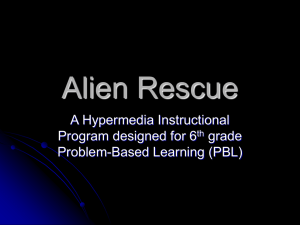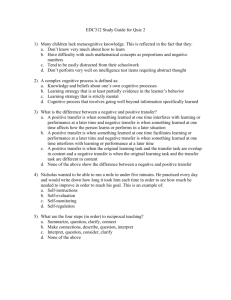Daily Lesson Planning
advertisement
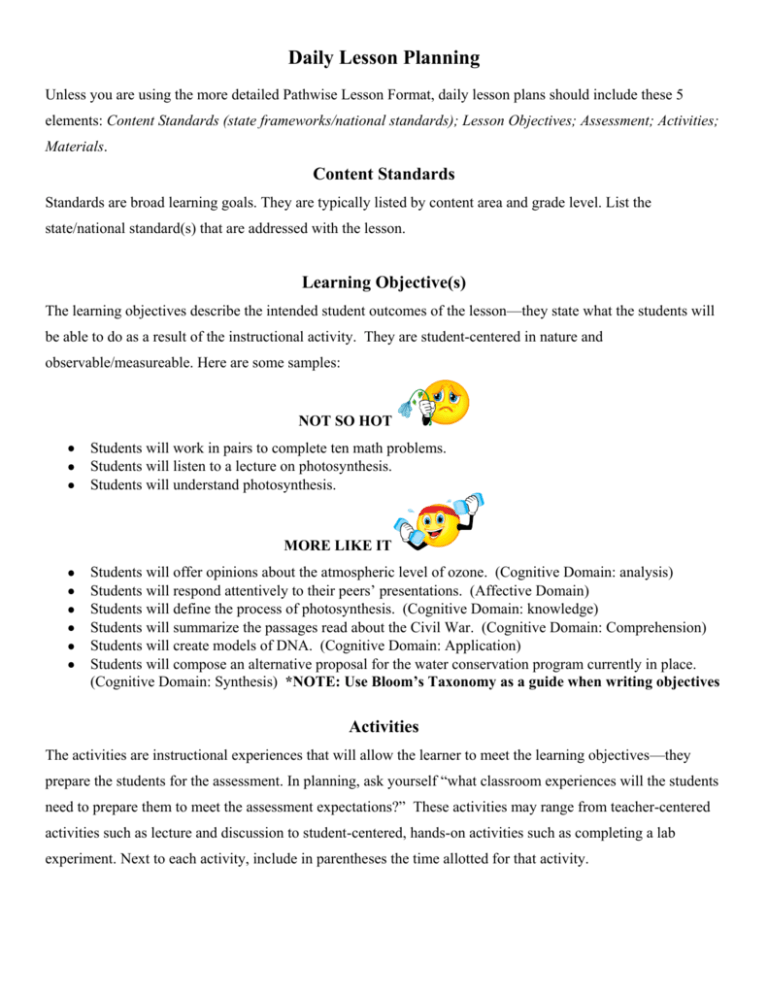
Daily Lesson Planning Unless you are using the more detailed Pathwise Lesson Format, daily lesson plans should include these 5 elements: Content Standards (state frameworks/national standards); Lesson Objectives; Assessment; Activities; Materials. Content Standards Standards are broad learning goals. They are typically listed by content area and grade level. List the state/national standard(s) that are addressed with the lesson. Learning Objective(s) The learning objectives describe the intended student outcomes of the lesson—they state what the students will be able to do as a result of the instructional activity. They are student-centered in nature and observable/measureable. Here are some samples: NOT SO HOT Students will work in pairs to complete ten math problems. Students will listen to a lecture on photosynthesis. Students will understand photosynthesis. MORE LIKE IT Students will offer opinions about the atmospheric level of ozone. (Cognitive Domain: analysis) Students will respond attentively to their peers’ presentations. (Affective Domain) Students will define the process of photosynthesis. (Cognitive Domain: knowledge) Students will summarize the passages read about the Civil War. (Cognitive Domain: Comprehension) Students will create models of DNA. (Cognitive Domain: Application) Students will compose an alternative proposal for the water conservation program currently in place. (Cognitive Domain: Synthesis) *NOTE: Use Bloom’s Taxonomy as a guide when writing objectives Activities The activities are instructional experiences that will allow the learner to meet the learning objectives—they prepare the students for the assessment. In planning, ask yourself “what classroom experiences will the students need to prepare them to meet the assessment expectations?” These activities may range from teacher-centered activities such as lecture and discussion to student-centered, hands-on activities such as completing a lab experiment. Next to each activity, include in parentheses the time allotted for that activity. Assessment Assessment is the information gathered from the students that provides evidence of the degree to which they have met the objective(s). In planning, ask yourself “what evidence will I need to gather from the students to indicate they have met the objective?” There are two general types of assessment: Formative (on-going and frequent—done to help instructor plan instruction based on the needs of the learners) and Summative (an overall measurement of learning at the conclusion of an instructional unit). It is not necessary to have both types of assessment in every lesson plan, but each plan needs an assessment, whether formal or informal, to determine if the lesson objectives have been met. Materials Materials are resources the teacher and learners will need to successfully complete the learning activities and assessments. These items can include handouts, audio-visual equipment, etc. Other Important Considerations: In addition to these five elements, there are other considerations teachers make in creating effective lessons. Use the following questions to prompt your thinking as you plan and reflect on lesson effectiveness: In what ways does this lesson stimulate higher order thinking? What evidence do you have that all students are thinking beyond knowledge and comprehension? How does this lesson reflect your knowledge of learning styles/intelligences? Are students with various learning styles/intelligences having their learning needs met? What evidence do you have of this? In what ways does this lesson reflect your appreciation of human diversity? (exceptionality, language, socioeconomic status, culture, family and community values)

